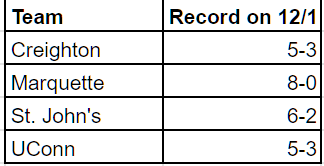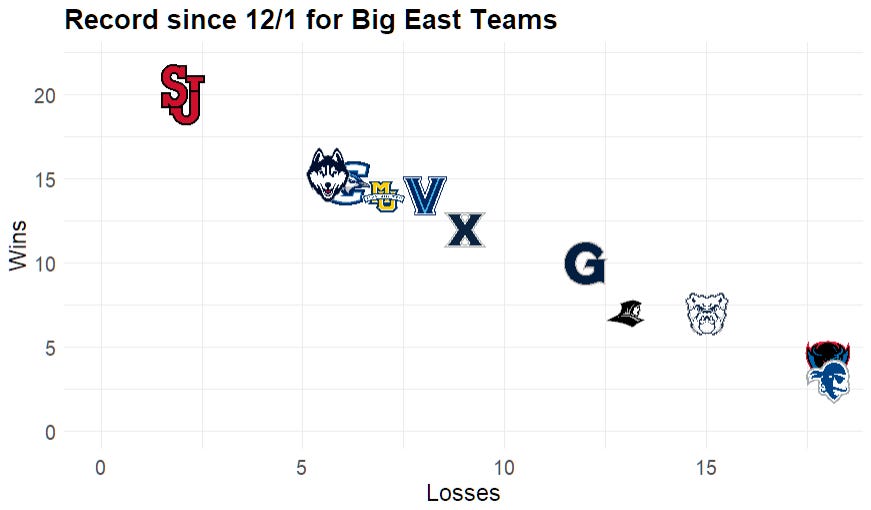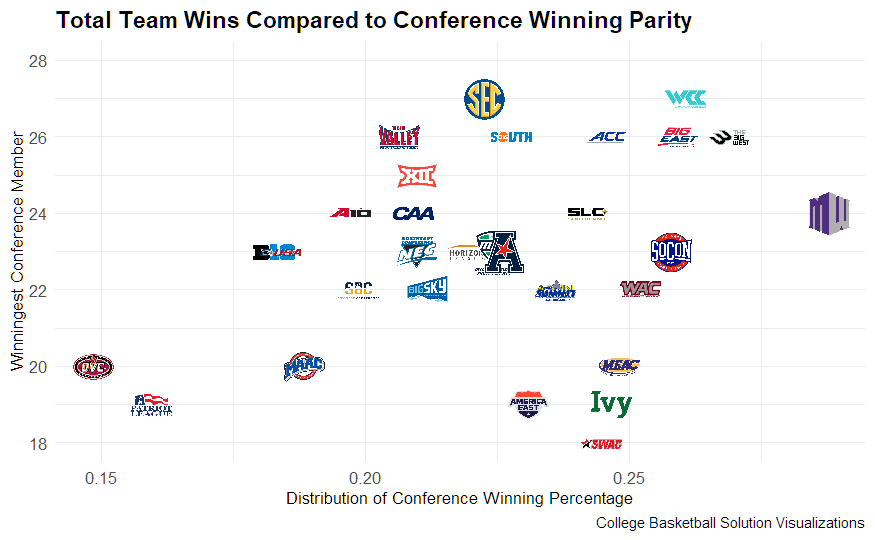As the regular season winds down, it’s a good time to revisit some of my predictions—some bold, others less so—and wrap up a few less-than-accurate statements made over the past several months. Ranking teams is inherently subjective, but total wins are a measurable achievement. Back in December, I made predictions about which teams would reach the 30-win mark, having watched about a month’s worth of basketball.
I set the deadline at Selection Sunday, allowing teams up to 33 or 34 opportunities to reach 30 wins—more than the 31 available in the regular season and far more than the nearly 40 that could come with a deep March run.
Below are the teams I felt most confident would hit that mark.
As of March 1st, Memphis, Liberty, and Irvine still have a shot at reaching 29 wins, but Drake is the only team that can hit the 30-win mark if they win out. Let’s take a look at what went right and what went wrong.
Kam Jones’ Golden Eagles
The decision to select a team from a high-major conference was based on the perceived weakness of the conference.
Above are the other top teams in the conference, along with their records as of December 1st. UConn and Creighton had already endured three-game losing streaks, and St. John’s had lost to Georgia, a team that Marquette had already beaten. This provided confidence that Marquette could easily win 17 or 18 conference games.
This wasn’t the case for the rest of the non-conference schedule, nor for the conference games. Since the start of December, Marquette is tied for fourth in the conference in wins, alongside Villanova. St. John’s, on the other hand, has reached 26 wins. While they would need to win out to hit the 30-win mark, this is certainly possible with the Big East Tournament being held at Madison Square Garden.
The Big East is generally weak outside of occasional strong showings from UConn, Marquette, and Creighton. However, it’s clear that the wrong team in the right conference was backed.
A Few Good Bulldogs
Gonzaga may struggle to reach 25 wins, as they’ll likely need to win their conference tournament. Their conference is one of only two (along with the Sun Belt) where the top two teams advance to the semifinals. Despite a win total lower than what we typically expect from Gonzaga, the Bulldogs have been competitive in every game. Of their eight losses, three were in overtime, and the other five were lost by an average of just 4.8 points.
However, there’s another team in the same conference with an impressive win total. While they only have two games left to close the three-game gap to 30 wins, St. Mary’s has outperformed Gonzaga this season. Having swept the regular season series, the Gaels have made the most of their 33 opportunities.
Winningest teams in the country, led by Auburn and SMC.
You’d be remiss not to mention the discrepancy in non-conference strength of schedule. While the Gaels did beat Nebraska and USC on neutral courts and Utah on the road, these victories don’t compare to the gauntlet Gonzaga faced. There’s nothing wrong with how Randy Bennett scheduled, but when evaluating a team for the rest of the season, the most important factor is the games they still have to play.
Gonzaga, after starting their non-conference schedule 7-1, lost three of their next five games. At 9-4, with only 33 opportunities remaining, Gonzaga was already mathematically ineligible to reach 30 wins.
The Anteaters
Both UC San Diego and UC Irvine are in the conversation as teams approaching 30 wins as the season winds down. Teams that split their season series have set themselves apart within the conference. If San Diego wins their final two regular-season games, they could find themselves facing Irvine in the conference tournament. Irvine will be aiming for their 29th win, while the Tritons—on the NCAA Tournament bubble and in a unique position with the Big West possibly earning two bids—may be fighting for their 30th win and a spot in the tournament.
San Diego is currently on an 11-game losing streak, ranks in the top 40 at KenPom. After starting 2-2, they’ve gone 24-2 since. During this stretch, the Tritons lost to Irvine at home, who have since dropped five games after starting the season 9-0.
Selecting a team that had already lost two games to finish 28-2 down the stretch was a tough call, especially with UC San Diego being outside my top 150 in the preseason, while Irvine has remained in KenPom’s top 100 for most of the season.
Though this pick won’t quite reach the mark, the consolation of being in such an intense conference race with a team still eligible for 30 wins before Selection Sunday is something worth accepting.
Give Me Liberty
Liberty's conference win distribution is one of the most intriguing in the country.
Aside from Sam Houston and FIU, each team is within seven wins of one another. Excluding these bottom two teams, only five games separate the most losing teams from the top team in the conference.
C-USA has a distribution similar to the Big Ten and ranks in the bottom five in the country for conference winning percentage distribution. What does this mean for our analysis? When teams in a conference are relatively equal in strength, and there aren’t easy wins like there might be in conferences such as the ACC or WCC, it becomes challenging to rack up victories. This was the case for Liberty this season, with four conference losses. Despite only one non-conference loss, a team’s record is largely determined by how they perform against conference opponents, and C-USA wasn’t the most favorable for picking up wins.
In contrast, the Mountain West stands out on this graph, showing a significant gap between the top and bottom teams.
Air Force and Fresno State’s 1-17 records against their conference significantly skew the statistic. However, there’s a notable amount of parity near the top, with five teams all between 13 and 15 wins. While Utah State was in a strong position to approach the 30-win mark after a 16-1 start, the other top teams in the Mountain West present a greater challenge compared to a conference like the WCC. In the WCC, Santa Clara and San Francisco are solid teams, but they’re a tier below New Mexico and San Diego State.
Big Memphis
The term “Big” refers to Memphis’s opportunities in the American, which KenPom ranks as the 10th-best conference. However, Memphis currently ranks below Conference USA, the conference where many of their teams were just a few seasons ago. On the other hand, “Memphis” has become symbolic of disappointment—a program often associated with high expectations but consistently underperforming against lesser opponents. Despite reaching the Maui Championship game in November, Memphis has since suffered three losses to quad-three teams. While a 23-win, ranked team would be acceptable for most programs, Memphis stands out in their conference, and their failure to go undefeated is particularly disappointing.
Even the best teams occasionally stumble, as seen with Gonzaga in the WCC in years past, but against such weak opponents, a superior team should dominate consistently. This should be the case when considering the teams Memphis has faced. Since the start of the year, Memphis has only played one team in KenPom’s top 100, a four-point win against North Texas.
Seven of Memphis' thirteen conference wins have come by fewer than 10 points—something that shouldn’t happen against many teams outside KenPom’s top 150. While a strong win over UAB bolsters Memphis’s case, and they seem to have FAU’s number, their lack of consistency against teams at a clearly different talent level has led to two losses in conference play.
Certified Lover Boy
Not only has this been an impressive first season for Ben McCollum in terms of win total, but several of those non-conference victories have aged well. Kansas State has had an up-and-down season, but the real standout is Vanderbilt, which is firmly positioned in the tournament picture. A 7-0 start is strong, but the true test came in how the Bulldogs would fare against their conference schedule. Bradley was my preseason pick to win the Valley, and Belmont has always been a threat, winning 20 or more games every season since 2011.
Although Drake lost at Bradley, their other two losses came in unexpected places. A defeat at UIC to start 2025 and a home loss to Murray State put Drake in a tough spot, but since then, they’ve gone 14-1, putting them in a position to reach the 30-win mark if they win out.
Anything can happen in Arch Madness, and with this level of talent and a first-year coach, it should be easier to trust a high-major team than one with a roster largely composed of players competing at the D1 level for the first time.
The Formula
While only one of my predictions is still in the running for 30 wins, that doesn’t mean we won’t see at least one team reach that milestone before Selection Sunday.
Auburn could get to 32 wins, with three in the SEC tournament and two games to close out the regular season.
The aforementioned St. John’s and UCSD need to win out to eclipse the 30-win mark.
Duke sits at 26 wins and has five more opportunities.
Florida will need to win out and potentially top Auburn in the SEC Tournament to get there.
Houston, after starting 4-3, will need to end their season 5-0 to reach 30 victories.
Interestingly, of the teams still eligible, five out of the seven are high-major programs. While these teams have the potential to pad their records with easy non-conference schedules and 10 or 11 victories, they also face tougher competition in the other two-thirds of their season.
While a strong start is important, Duke, UCSD, Houston, and St. John’s all had two or more losses after a month of play, proving that it’s not how you start, but how you perform down the stretch. This makes December predictions quite difficult, as it’s hard to foresee UCSD going 28-2 through the rest of the season.
Therefore, when predicting win totals, the most reliable factors to consider are schedule ease and conference win distribution—things that can only be fully understood after a month or more of gameplay.
-BM










